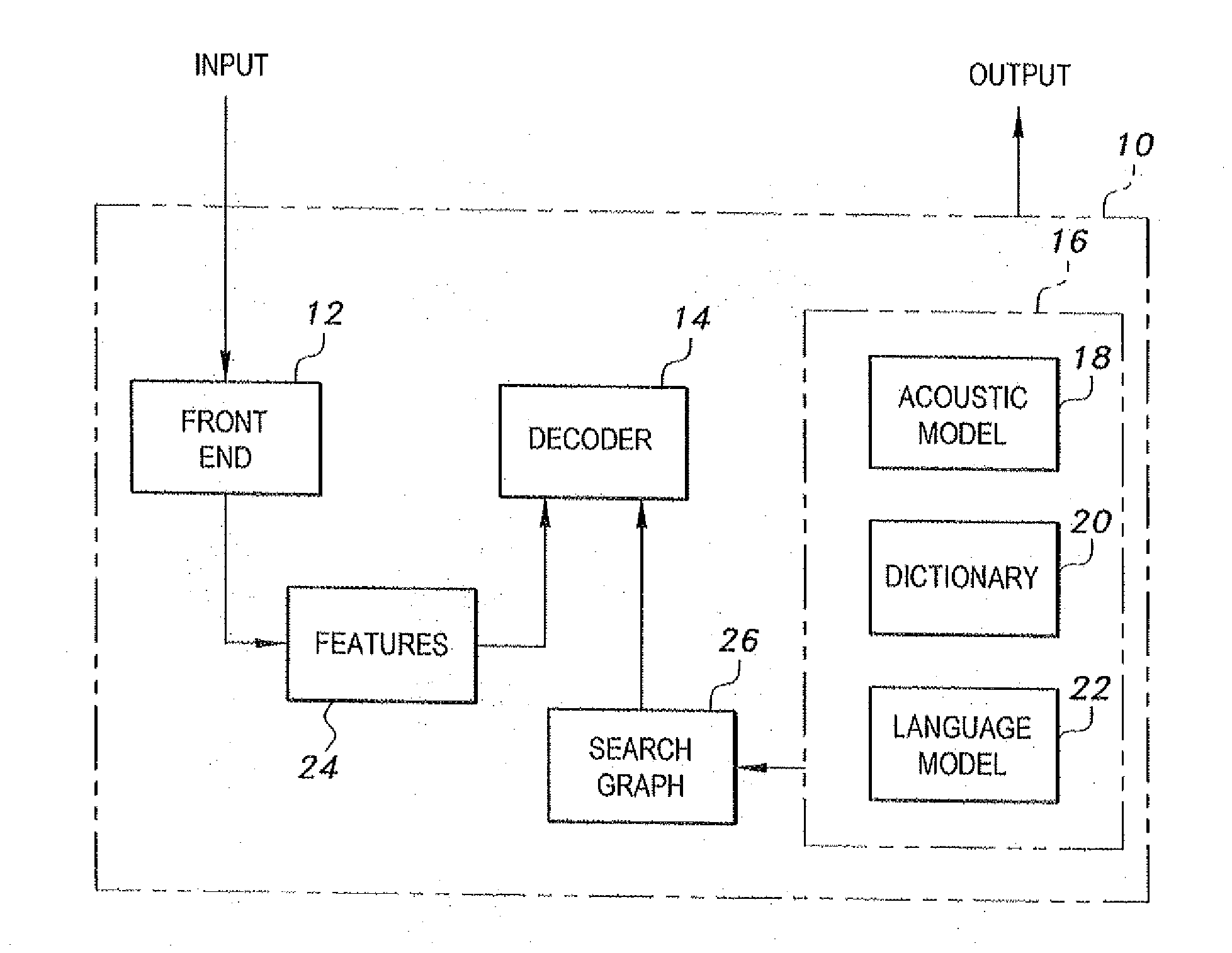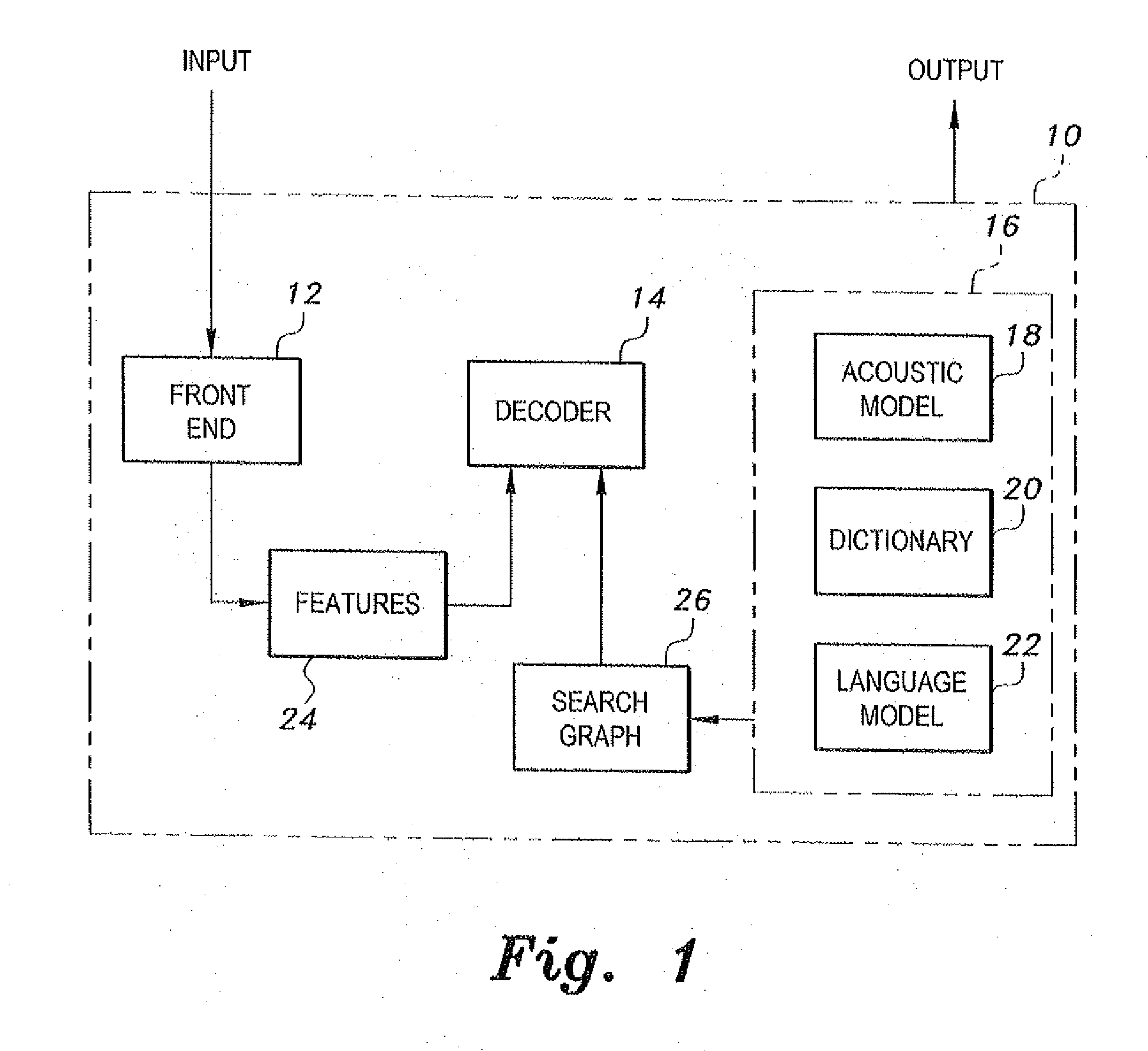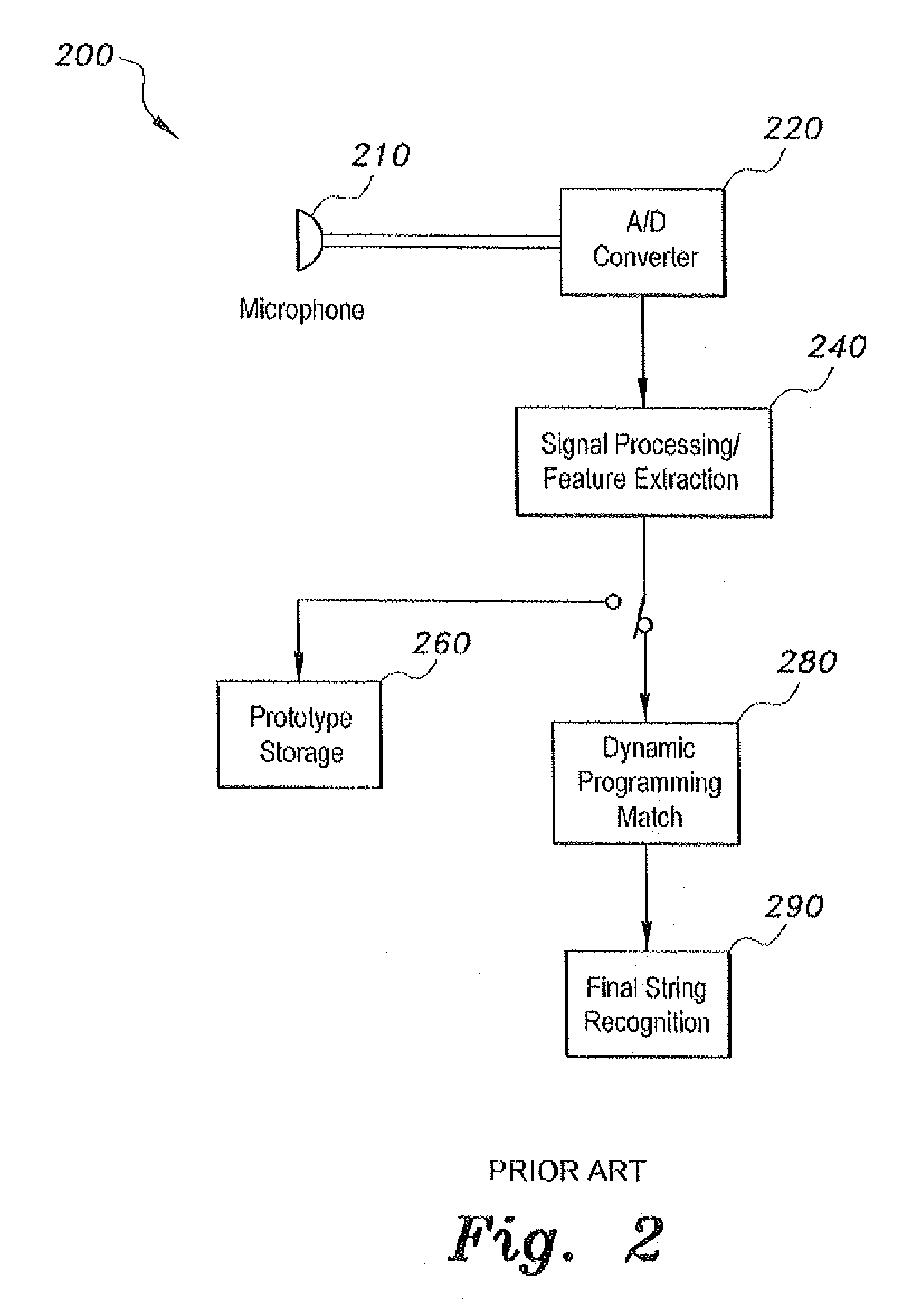System and method for decoding speech
a speech recognition and speech technology, applied in the field of speech recognition software, can solve the problems of arabic speech presents specific challenges in speech recognition effective that conventional speech recognition systems are not adapted to handle, and the use of a large set of pre-stored words or utterance-level prototypes is, at best, cumbersome, etc., to increase the probability of speech recognition
- Summary
- Abstract
- Description
- Claims
- Application Information
AI Technical Summary
Benefits of technology
Problems solved by technology
Method used
Image
Examples
Embodiment Construction
[0033]In a first embodiment of the system and method for decoding speech, a data-driven speech recognition approach is utilized. This method is used to model within-word pronunciation variations, in which the pronunciation variants are distilled from the training speech corpus. The speech recognition system 10, shown in FIG. 1, includes three knowledge sources contained within a linguistic module 16. The three knowledge sources include an acoustic model 18, a language model (LM) 22, and a pronunciation dictionary 20. The linguistic module 16 corresponds to the prototype storage 260 of the prior art system of FIG. 2. The dictionary 20 provides pronunciation information for each word in the vocabulary in phonemic units, which are modeled in detail by the acoustic models 18. The language model 22 provides the a priori probabilities of word sequences. The acoustic model 18 of the system 10 utilizes hidden Markov models (HMMs), stored therein for the recognition process. The language mod...
PUM
 Login to View More
Login to View More Abstract
Description
Claims
Application Information
 Login to View More
Login to View More - R&D
- Intellectual Property
- Life Sciences
- Materials
- Tech Scout
- Unparalleled Data Quality
- Higher Quality Content
- 60% Fewer Hallucinations
Browse by: Latest US Patents, China's latest patents, Technical Efficacy Thesaurus, Application Domain, Technology Topic, Popular Technical Reports.
© 2025 PatSnap. All rights reserved.Legal|Privacy policy|Modern Slavery Act Transparency Statement|Sitemap|About US| Contact US: help@patsnap.com



